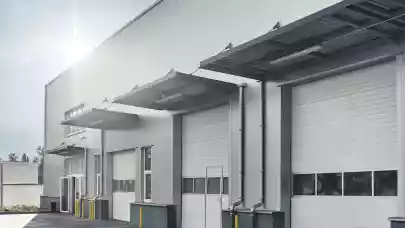
Paweł Sapek, Senior Vice President, Regional Head CE & Country Manager of Prologis talked to Property Forum about the state of the warehouse market, the changing expectations and demands of tenants and new challenges for the nearest future.
What is the condition of the Polish warehouse market in December 2020? Can we risk a statement that it is indeed a “winner” in the pandemic-affected real estate market?
Business results for 2020 will only be available at the end of January 2021. By analyzing the data of the first nine months of this year, however, we may say that our business has proven to be crisis-proof. At the end of the third quarter of 2020, the level of occupancy in Central Europe was 94 percent. (Poland stood at a stable 93 percent.) What is particularly important for us is that the customer retention rate was as high as 82 percent, which means that the vast majority of our customers have decided to extend their cooperation with us. This allows us to positively assess the passing, challenging year of 2020 and to look forward to the future with optimism. According to our COVID-19 special report series, the pandemic has brought more than five years of evolution in the retail market within less than five months, and logistics real estate is poised to benefit from the acceleration in the transition to e-commerce. In Europe, e-commerce penetration levels average 11 percent today, so every 100 bps of additional e-commerce adoption could translate to almost 2.0 million square meters of incremental logistics real estate demand.
Can we say that Prologis is a winner too?
Being the global leader in logistics real estate, $2.2 trillion worth of goods flow through our distribution centers each year, representing nearly 2.5 percent of world GDP. In Poland, the annual throughput of our warehouses is $50 billion, representing 8.5 percent of the national GDP and 24.2 percent of household consumption excluding services. The leasing activity in our portfolio, the market fundamentals, valuations, and rent collections are all trending favorably, and Prologis has adjusted its guidance globally based on a more positive outlook for the second half of 2020. In Central Europe (Poland, Czech Republic, Slovakia and Hungary), we ended the third quarter of 2020 with a total portfolio of 4.27 million square meters. Occupancy stood at a stable 94.1 percent. In 2020 our Prologis CE team have signed deals covering 1,271,072 square meters, which is equivalent to the total 2019 leasing activity.

Paweł Sapek
SVP, Regional Head CE & Country Manager
Prologis
Prime warehouses are an extremely sought-after asset class, as they saw an over 200 percent increase in investment activity in the first three quarters of 2020 compared to the same period last year. Can we expect a withdrawal of investors from the retail and office markets and their inflow to warehouse & logistics?
As for the global trend, Q3 demand levels in the office market decreased compared to the same period of 2019, while the retail warehouse sector was less affected by COVID–19, and there’s an apparent under-supply of prime target locations. It can be validly assumed that certain signs do indeed suggest that the trend you have mentioned might have a long way yet to run. As for the recent structural trend in the warehouse & logistics markets, we are facing greater demand for facilities located within and adjacent to major population centers. Fortunately for us, our portfolio is at the consumption end of the supply chain (last touch/city distribution 50 percent and growing), and staying ahead of our customers’ needs is also in line with the current structural drivers of demand. As a general partner, Prologis provides investor security through its durable, A-rated balance sheet and best-in-class portfolio.
“Last mile” logistics and so-called “urban warehouses”, together with the e-commerce development, seem to be the hottest topic in the industry. Will Prologis also pursue this trend in the immediate future?
Online sales have accelerated dramatically and, given that e-commerce requires more than three times the logistics space of brick-and-mortar sales, it generates significant demand for logistics real estate. Prologis is in a good position in this respect for we are already in the world’s most desirable urban infill locations and consumption centers. The direct access of our Last Touch® assets to transportation routes affords the highest level of service.
Analysts forecast that many companies will move at least part of their production activities to Europe to avoid a repeat of the sudden break of supply chains with China. Do you see the first signs of nearshoring among your customers?
Our COVID-19 reports found that planning for future disruptions could gradually push many industries toward a greater diversity of manufacturing locations, including on- and nearshoring. Low-cost production centers, such as Central and Eastern Europe, are beginning to see increased interest. However, these changes are likely to be a long-term trend that plays out over several years.
What are the biggest challenges that Prologis will have to face in the next 12 months?
We have found that, as we adjust to the “new normal”, companies emphasize resiliency over efficiency in their supply chains. Accelerated e-commerce adoption and higher inventories could produce substantial new demand for logistics real estate. Another important lesson is that consumers have increasingly higher service level expectations, and logistics customers will need more than ever the right buildings equipped with the right features and situated in the right locations to meet the needs of the supply chain. Thus, fulfilling these customer demands will remain our biggest challenge in 2021. Our current report on automation, however, reveals another challenge and perspective. This shows that automation also offers significant economic benefits for logistics real estate as customers who incorporate automation are inclined to sign longer leases and are more likely to renew.
Are there any new acquisitions or new development locations in the pipeline?
As for Poland, we have two new developments under construction: a 73,400 sqm BTS for EURO-net, the owner of the nationwide retail chain RTV EURO AGD, at Prologis Park Janki in the Warsaw region, as well as an 11,080 sqm built-to-suit at Prologis Park Ruda Śląska in Lower Silesia. We have also recently expanded our Hungarian portfolio with a new 13-hectare site in Szigetszentmiklós. Prologis Park Budapest-Sziget II has all the necessary building permits and development potential for two modern facilities totaling 60,000 sqm, and will provide customers and their employees with a range of services and conveniences, such as on-site technical support, a car-sharing program and green spaces, in order to create a high-quality working environment where employees enjoy coming to work, and where nature can flourish.



